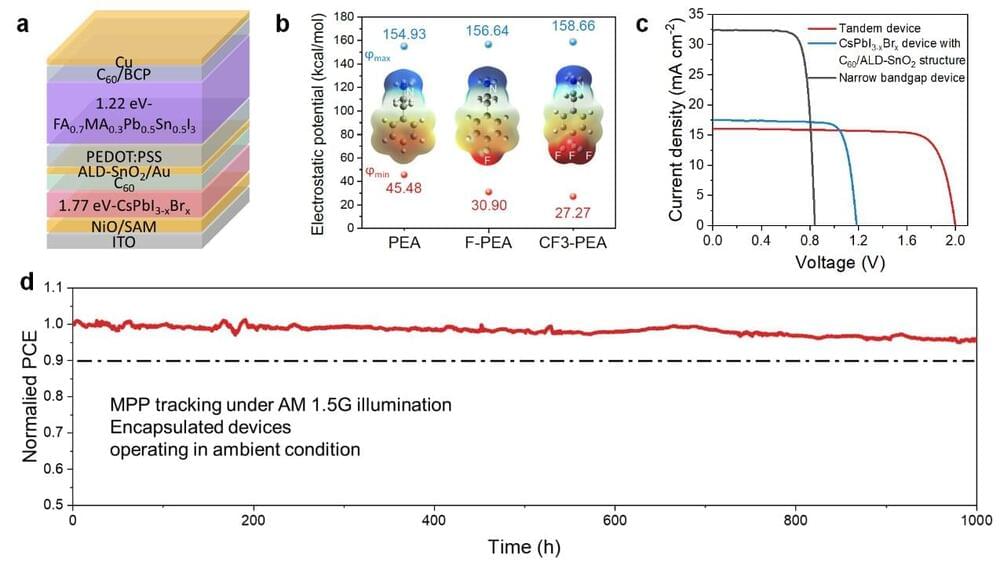All-perovskite tandem solar cells, stacks of p-n junctions formed from perovskites with different energy bandgaps, have the potential of achieving higher efficiencies than conventional single-junction solar cells. So far, however, most proposed all-perovskite tandem cells have not achieved the desired power conversion efficiencies (PCEs), often due to difficulties associated with creating suitable narrow-and wide-bandgap subcells.
Researchers at Nanjing University and University of Toronto recently developed new inorganic wide-bandgap perovskite subcells that could increase the PCEs and stability of these promising solar cells. Their design, introduced in a paper in Nature Energy, involves the insertion of a passivating dipole layer at the interface between organic transport layers and inorganic perovskites within the cells.
“Our research group has been focusing on improving the PCEs of all-perovskite tandem solar cells, which have broken the world record several times and have been included in the ‘solar cell efficiency tables,’” Hairen Tan, one of the researchers who carried out the study, told Tech Xplore.
